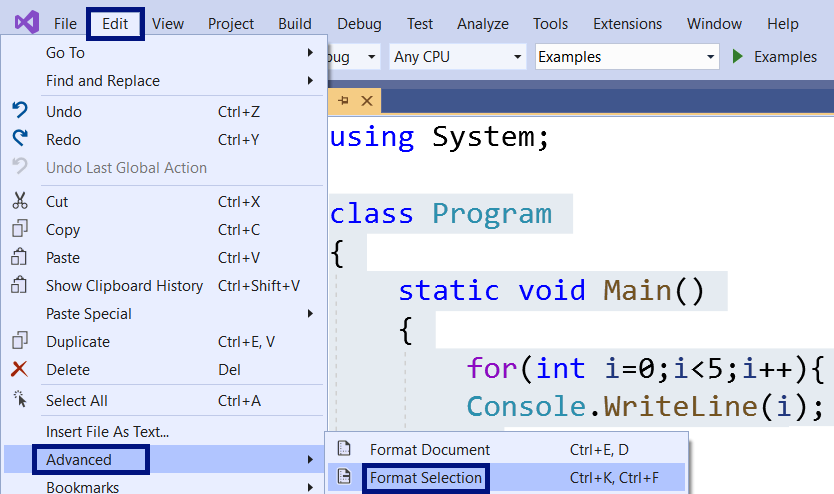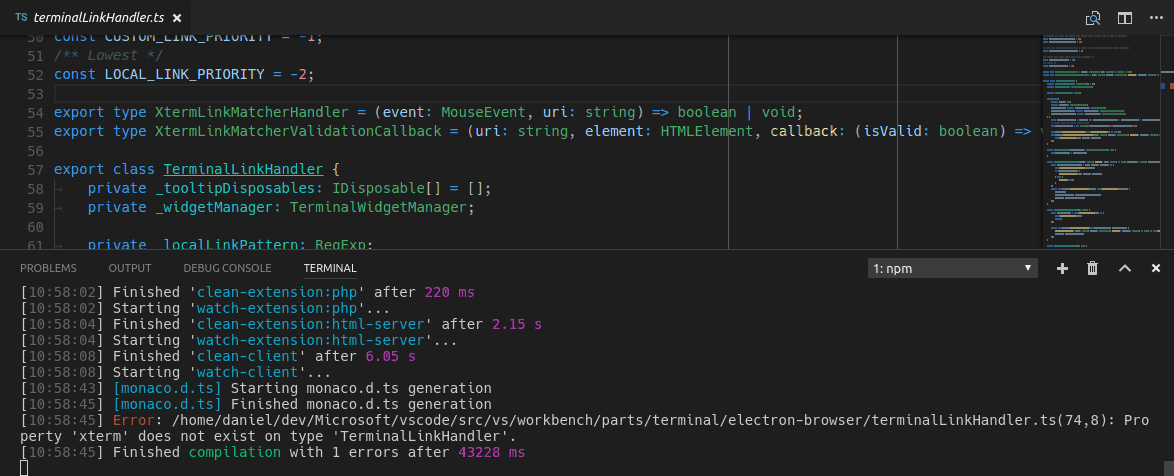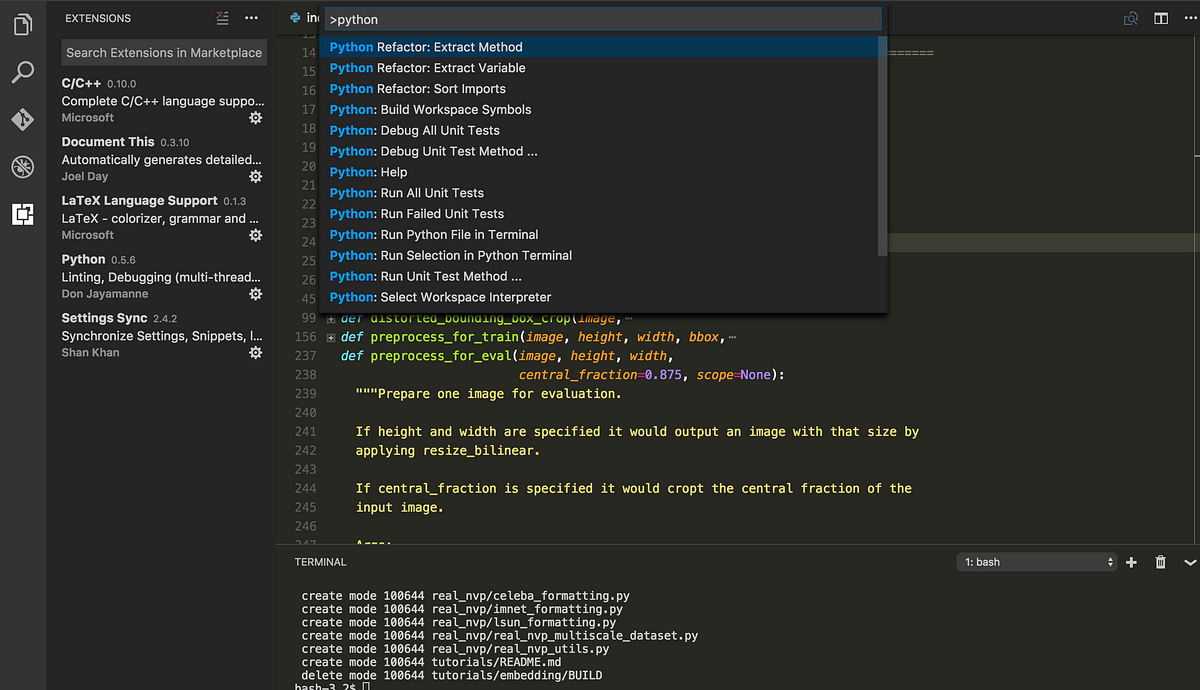

You can view active issues, comment on them and upvote them on Developer Community. Please try it out and let us know if you run into any issues by reporting them via Help > Send Feedback > Report A Problem from inside the Visual Studio IDE. This feature is currently out in Preview.

So, if you’re using one of these default styles and are not planning on deviating from its rules, make the selection in Tools > Options and you’re good to go without the ClangFormat file. These function the same as having a ClangFormat file with its style property set to one of these options, with no other alterations, so in this case we’re running ClangFormat with just that setting on. However, you can also specify LLVM, Google, Chromium, Mozilla, or WebKit coding conventions as well. By default, Visual Studio is selected, meaning we do what Visual Studio usually does for formatting and do not run ClangFormat at all. We will always prefer that file if it exists, but if we cannot find it, we will use the formatting convention selected in that option. clang-format or _clang-format file in your source tree. The Default formatting style allows you to control your formatting experience if you do not have a. You can change this to have it only use ClangFormat for explicit Format Document and Format Selection commands by choosing Run ClangFormat only for manually invoked formatting commands. By default, ClangFormat will also emulate Visual Studio formatting, reacting to characters like braces () and semicolons to format as you type. To turn this off, you can uncheck Enable ClangFormat support. You can find them at Tools > Options > Text Editor > C/C++ > Formatting.īy default, Visual Studio will use any existing ClangFormat file in your source tree for formatting operations. There are a number of configurations you can make in Tools > Options to control your ClangFormat experience. For the complete list of ClangFormat style options, visit the official documentation.

clang-format file builder and guide to ClangFormat styling options in general. If you don’t already have a sample file to get started with, there is a handy website that features an interactive. ClangFormat also runs if you run the Format Document (Ctrl+K, Ctrl+D) or Format Selection (Ctrl + K, Ctrl + F) commands from the Edit menu or keyboard shortcuts manually in Visual Studio. clang-format or _clang-format file in your codebase, you will notice Visual Studio uses it for formatting immediately, as soon as you make an edit in your code that would trigger a formatting operation. Some of the noticeable changes here include the maximum column width (now set to 50), and the presence of the opening curly brace on the same line as the header preceding it.

clang-format file in the screenshot above, here is a before and after representation of a code sample when Format Document is invoked on it:Ĭode before the Format Document operation This can be configured in Tools > Options. This is the same as having the file there with the -style switch set to one of these conventions. We also provide a way to enforce the built-in formatting conventions that ClangFormat ships with (LLVM, Google, Chromium, Mozilla, or WebKit) without requiring a separate ClangFormat file. We run the ClangFormat utility in the background to do the formatting, so you get all of ClangFormat’s features right away. Any given code file will be styled by the ClangFormat file closest to it in the directory tree. You can use multiple ClangFormat files to apply different styling rules at different locations in your codebase, if desired, by placing files in different folders. ClangFormat, however, has a much larger variety of style options than EditorConfig, including some very C++ specific rules that can be set, and it is already used by C++ developers today. Note that Visual Studio also supports EditorConfig, which works in a similar way. It is easily shareable via source control, so you can enforce coding conventions across your whole development team. This file should be present in your source code directory tree, and applies formatting conventions to all code files at the same level or in any sub-folders. ClangFormat is a utility that makes it easy to style and format your code based on a set of rules that can be configured in a. Specifically, we ship version 5.0 of the clang-format.exe. For up-to-date documentation see Options, Text Editor, C/C++, Formatting – Visual Studio (Windows).Visual Studio 2017 15.7 Preview 1 comes with built-in ClangFormat support for C++ developers.


 0 kommentar(er)
0 kommentar(er)
